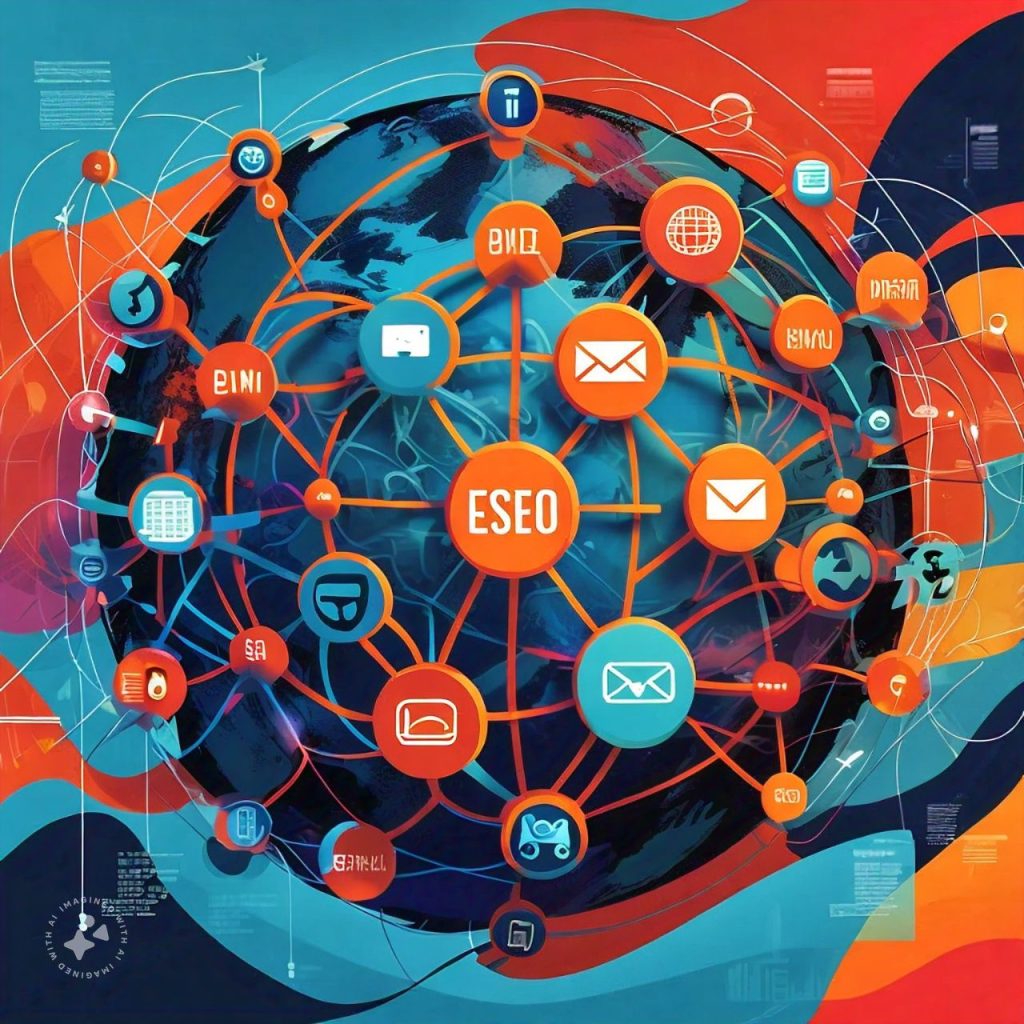Introduction
In the ever-evolving digital world, businesses face constant pressure to stay relevant and engage with audiences online. As traditional marketing methods fall short, digital marketing has emerged as the answer for companies looking to reach customers effectively. However, many businesses are uncertain about where to start or how to make digital marketing work for them. In this blog, I’ll dive into digital marketing using the Problem-Agitate-Solution (PAS) framework, offering real-world examples, clear solutions, and actionable tips.
What is Digital Marketing?
Digital marketing refers to the strategies and tactics used to promote products and services through online channels like social media, search engines, email, and websites. Unlike traditional marketing, digital marketing allows businesses to engage directly with customers in real-time, creating more personal and measurable interactions.
Problem: The Struggles of Traditional Marketing
1. Traditional Marketing is Costly
In traditional marketing, businesses invest in ads, billboards, TV commercials, and print media, which tend to be costly with limited reach. For small to mid-sized companies, these costs are often prohibitive. And even when companies invest heavily in traditional methods, they can’t accurately measure engagement or return on investment (ROI).
Example
Let’s take a look at Macy’s, a brand that historically invested in TV commercials, radio ads, and print campaigns. However, with shrinking consumer attention and rising ad costs, Macy’s saw diminishing returns on its traditional marketing spend. Like many big brands, Macy’s needed an approach that offered better engagement and ROI, leading them to explore digital marketing channels.

2. Difficulty Reaching the Target Audience
In the old model, you place ads hoping they reach the right people. However, traditional ads often miss the mark because they lack targeting capabilities. Today’s customers are more particular, and they expect relevant, personalized experiences. Traditional media doesn’t offer the same control over audience segmentation as digital platforms, making it harder to connect with the right people.
Example
Take Coca-Cola’s 2015 campaign. They spent millions on a global print and TV campaign, only to realize they weren’t capturing the young, digitally-savvy audience they wanted. The one-size-fits-all approach limited their ability to reach and engage their target audience.
3. Limited Data and Analytics
With traditional marketing, there’s no easy way to measure exactly how effective an ad is. Was the ad seen? Did it result in a purchase? These questions remain largely unanswered with traditional methods. Without data, it’s nearly impossible to refine and improve campaigns.
Example
Procter & Gamble (P&G), one of the world’s largest advertisers, faced this challenge with their campaigns. In 2017, they reported billions of dollars in waste due to inefficient ad placements, and they struggled with tracking campaign performance. They realized the need for a more data-driven approach, leading them to shift focus to digital channels where they could monitor customer behaviors and adjust their campaigns in real-time.

Agitate: Why Ignoring Digital Marketing Can Hurt Your Business
1. Falling Behind the Competition
If you’re not using digital marketing, there’s a high chance that your competitors are. As they capture customers online, those not investing in digital channels risk losing market share. Digital marketing’s rapid growth has made it a must-have for any business that wants to compete in today’s market.
Example
Consider Blockbuster’s fall and Netflix’s rise. Blockbuster stuck with physical stores and traditional marketing, while Netflix tapped into online channels. By the time Blockbuster considered digital options, Netflix had already captured a huge online audience. Blockbuster’s delay in adopting digital marketing contributed to their decline.
2. Missing Out on Customer Insights
Without digital marketing, businesses lose the ability to understand their customers’ online behaviors, which makes it challenging to create products or services that meet their needs. As customers increasingly research, compare, and purchase online, not engaging with them digitally limits your access to valuable insights.
Example
In 2019, Domino’s Pizza used a “Pizza Tracker” to follow customers’ orders online and learn about ordering patterns. These insights allowed Domino’s to make operational changes that improved customer satisfaction. Without these digital tools, they would have missed out on customer preferences and feedback, resulting in lost sales.
3. Limited Growth Potential
Digital marketing offers a global reach that traditional methods simply can’t match. By ignoring digital channels, businesses miss opportunities to tap into new markets and grow their customer base beyond geographical limitations.
Example
Fashion retailer ASOS operates in over 200 countries, relying on digital marketing to expand its reach. Traditional advertising alone would never have allowed ASOS to grow its global footprint so effectively. Through targeted digital campaigns, ASOS attracted customers worldwide, achieving significant growth over competitors focused solely on traditional methods.
Solution: How Digital Marketing Transforms Businesses
1. Targeted Advertising: Reaching the Right People
With digital marketing, you can create campaigns aimed directly at specific customer groups. Platforms like Facebook and Google Ads allow businesses to target audiences by location, age, interests, and even behavior. This level of customization means better engagement and conversions, as ads reach those most likely to be interested.
Example
Airbnb used digital ads to target travelers in specific cities where they had the highest vacancy rates. By running location-based campaigns, they increased bookings in target areas without needing a massive ad spend, as they were able to focus on users already inclined to travel to those locations.

2. Data-Driven Decisions: Improve Campaigns with Analytics
Digital marketing tools provide data on user engagement, click-through rates, conversions, and more. This data helps businesses see what’s working and what isn’t, allowing for informed adjustments. Platforms like Google Analytics offer insights that help refine campaigns for better results over time.
Example
Spotify uses data extensively to shape its digital marketing. Their “Wrapped” campaign leverages user data to create personalized year-end reviews, which users love to share. This data-driven approach leads to higher user engagement and brand loyalty, as it taps into the insights that matter most to their audience.
3. Cost-Effective Marketing with Higher ROI
Digital marketing is cost-effective because businesses can choose their spending and target specific audiences, which minimizes waste. With tools to measure ROI, businesses can see which campaigns deliver results and adjust accordingly. According to HubSpot, businesses that adopt digital marketing experience 2.8 times better revenue growth compared to those sticking with traditional methods.
Example
In a study of digital marketing for small businesses, digital ads generated a 20% higher ROI than traditional ads. Take Shopify, for instance, which relies on digital marketing to attract entrepreneurs. By using pay-per-click (PPC) advertising and targeted content marketing, Shopify has achieved substantial growth without needing the same massive budgets of traditional marketing.
4. Enhanced Customer Engagement and Relationship Building
With social media, blogs, and email marketing, businesses can interact directly with their customers, providing personalized responses and addressing concerns. Building a relationship with customers creates loyalty and encourages repeat purchases.
Example
Nike uses social media to engage with their audience on a personal level. By encouraging user-generated content, they create a community feel. Nike’s “Just Do It” campaign thrives on social media, where customers share personal stories, creating a sense of connection with the brand that traditional ads rarely achieve.
Conclusion
Digital marketing has revolutionized how businesses approach marketing, providing tools that are accessible, cost-effective, and measurable. By adopting digital marketing strategies, businesses can overcome the limitations of traditional advertising and reach a global audience with more precision. Whether you’re just starting or refining your current marketing approach, embracing digital marketing is key to growth and success in today’s competitive environment.

FAQs
1. Why is digital marketing important?
Digital marketing allows businesses to connect with their target audiences in a cost-effective, measurable, and personalized way. It offers real-time data and insights, which helps companies refine their strategies and maximize ROI.
2. What are the types of digital marketing?
Digital marketing includes search engine optimization (SEO), pay-per-click (PPC) advertising, content marketing, social media marketing, email marketing, and affiliate marketing, among others.
3. How can I measure the success of my digital marketing campaigns?
The success of digital marketing can be measured using tools like Google Analytics, which tracks metrics such as traffic, engagement, conversions, and ROI. These insights help businesses make informed decisions and improve future campaigns.
4. Is digital marketing suitable for small businesses?
Yes, digital marketing is particularly advantageous for small businesses due to its cost-effectiveness and precise targeting options. It allows small companies to compete with larger competitors without the need for huge budgets.
5. What is the best digital marketing strategy for beginners?
For beginners, starting with social media marketing and content marketing can be effective. These platforms allow you to build an audience and engage with potential customers directly. As you grow, consider adding SEO and email marketing for further reach.






